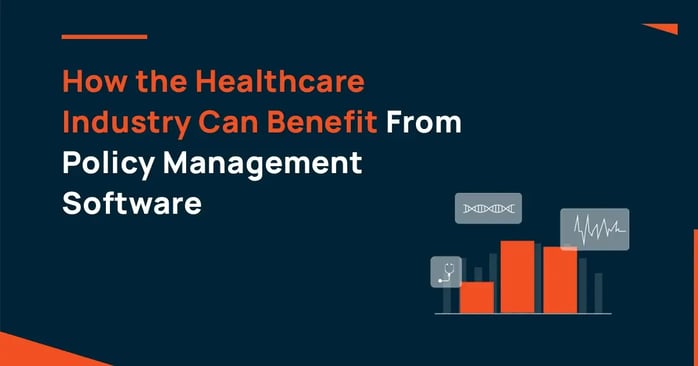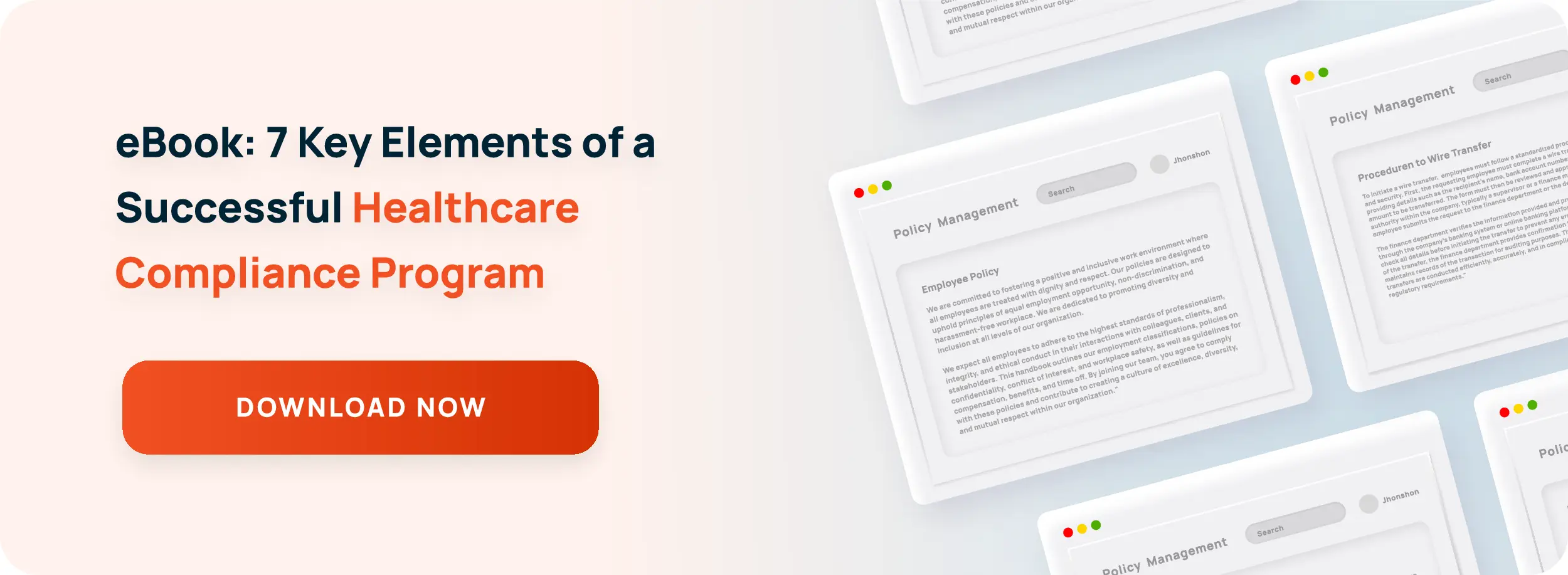How the Healthcare Industry can Benefit from Policy Management Software

The healthcare industry is one of the highest-risk industries in the United States. Healthcare is an industry built and sustained on the mantra of ‘do no harm,’ a type of social contract with its patients, employees, and even greater society.
Unsurprisingly then, it is an industry to which a slew of occupational and patient health and safety laws and regulations must apply. Any healthcare professional knows how overwhelming it can be to ensure ongoing compliance with all the mandatory regulatory requirements.
Policies and procedures that help ensure patient and employee health and safety are at the heart of any healthcare facility. These policies and procedures need to be kept updated and relevant at all times. How to best-achieve that can be tricky for any healthcare organization–not to mention costly.
A healthcare organization would do well to consider their policy and procedure management software options going into 2020. This article will briefly discuss what needs to be considered when assessing those options.
Why Optimized Policy Procedure Software?
To answer the question of what constitutes optimized software for the management of formalized policies and procedures, the healthcare risk professional needs to ask a critical question: Why have optimized policies and procedures for patient and employee health and safety? The fundamental reasons must include:
- Promotion of health and safety for patients and healthcare employees alike;
- Improved regulatory compliance;
- Improved systemic compliance;
- Greater consistency across all departments in the organization;
- Less reliance on memory and the culture of ‘this is how it’s always been done;’
- Reduced liability risks, including regulatory fines and patient-initiated lawsuits; and
- Reduced risks of substandard care and patient harm.
What Might be Covered in these Policies and Procedures?
Every healthcare facility has unique attributes and a unique risk profile. The size, location, and suite of healthcare options and specializations will determine these factors. Accordingly, policies and procedures, including those for occupational safety and health, need to reflect those factors.
However, there are key factors within the context of occupational safety and health that should be considered by any healthcare facility. Security-related factors can also have a safety imperative. These factors to be considered should include the following to reduce the risks of substandard care and patient harm:
- The flow of outpatients, visitors, suppliers, and contractors into and around the facility, including designated times and areas;
- The manner in which patients are admitted to and discharged from the facility;
- The personal hygiene of all staff within facility, as well as all suppliers and contractors;
- The acquisition, secure storage, and proper dispensing of all pharmaceutical drugs;
- The acquisition, secure storage, proper usage, and, where needed, regular calibration of healthcare-related equipment;
- The acquisition, secure storage, proper usage, and, where applicable, regular calibration of gases, gas pipelines, and hazardous chemical substances that may be used in the facility and;
- A risk-appropriate and adequate fire response system, including applicable fire equipment, alarms, and fire suppression systems, as well as well-designated means of egress.
What Should Policy and Procedure Software Offer?
If your healthcare organization or facility is indeed considering its policy and procedure management software options for 2020, then there are factors that should be demanded. Yours is an industry based on constant life or death decision-making and, therefore, your policies and procedures need the software to reflect that reality.
There are enormous demands placed upon any organization in the healthcare industry by patients/clients and regulatory bodies, whether it’s federal, state, or city/local. As such, the software you choose to manage your health and safety policies and procedures must:
- Be user-friendly across the entire organization;
- Be flexible with data inputs and outcomes;
- Be easily and regularly updated;
- Be risk-appropriate for your given organization/facility;
- Allow for the management of all health and safety risks applicable to your organization/facility;
- Ensure compliance to regulatory and other legal requirements as mandated at the federal, state, and city/county/local levels; and
- Be cost-appropriate for the given risk profile.
The important question for any healthcare professional to ask is this: does your current software provide all of these factors at all times?
Related Articles:
5 Steps to Proactive Monitoring in Health and Safety policies
Protecting Patient Privacy with Healthcare Policy Software
How to Alleviate Rising Healthcare Compliance Costs?
ConvergePoint in 2020
Our team at ConvergePoint is justifiably confident about what our state-of-the-art Policy Management Software can achieve for any healthcare organization or facility. We can also customize our software scalable to any size organization. Learn more about how ConvergePoint’s software can ease the stress of healthcare policy management.

